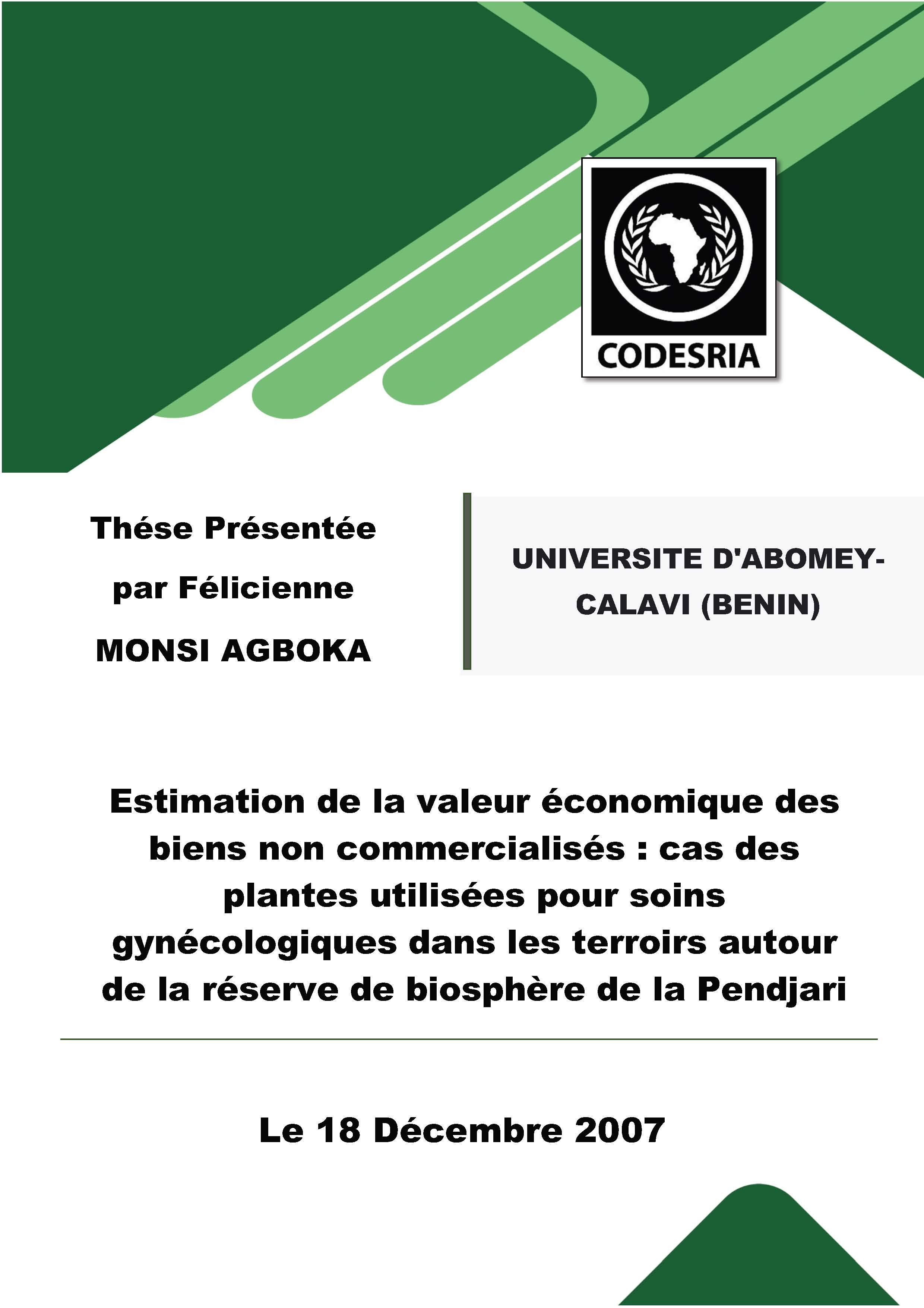Estimation de la valeur économique des biens non commercialisés: cas des plantes utilisées pour soins gynécologiques dans les terroirs autour de la réserve de biosphère de la Pendjari
Keywords:
valeur économique, biens non commercialisés, plantes, gynécologie, PendjariSynopsis
For a very long time, human beings have been using plants as a resort to solve their health problems. The advent of modem medicine, with its synthetically products, has not stopped the use of plants. Nowadays, we even notice a revival of interest of the rural populations as well as urban ones in the use of medicinal plants.
This research work, carried out in areas surrounding the Pendjari Biosphere Reserve, deals with the assessment of the economic value of medicinal plants, especially those used gynaecological cures. To achieve these objectives, 132 people were surveyed in six (6) villages chosen among others according to the factor of ethnical dominance. The sample of this research work was composed of four social and cultural groups which were Gourmantché, Wama, Berba and Fulani.
Data of the investigations showed that the main determinants of the harvesting and use of medicinal plants were the age, the wealth and the number of people to be taken care of. The probability to harvest and use medicinal plants increased when the individual was old, not wealthy and had to take care of a lot of people. However, both men and women carried out the activity of harvesting medicinal plants for gynaecological cures and for other purposes as well.
The exploitation of medicinal plants, particularly, those used for gynaecological cures generated costs to be met in order to preserve plant species. The willingness of the populations to pay for the conservation of the plants, was used to estimate the costs. Thus, the average willingness of individuals to pay for the conservation of the plants used for gynaecological cures was estimated to 273.61 FCFA per month, or 3283.33 FCFA per year.
The incomes that could be generated in the surrounding areas were 4,094,847.26 FCFA per month that was 49,138,167.12 FCFA per year. Among the interviewed people, 47.46 % prefered a monthly payment, 45.14 % prefered an annual payment and 7.40 % didn't care whether the payment is a monthly or yearly one. The factors that positively influenced the willingness of the individuals to pay were the wealth, the sex, the possession or not of a secondary activity and the fact of having traditionally cured gynaecological diseases. The money proposed, the age and the number of people to be taken care of, were the factors that decrease the willingness to pay.
So, although the medicinal plants were free in the area of the research, they had an economical value. This value was sometimes ignored. Therefore, it is important to take it into account to build up a better policy of medicinal spec1es conservation.
Downloads
References
Adjanohoun, E. J., 1982. L'homme et la plante médicinale en Afrique. Aménager le milieu naturel, 66(67). 51-57p.
Adjanohoun, E. J., 1995. La biodiversité tropicale face au développement des industries pharmaceutiques. Médecine Traditionnelle Afrique., 3-18p.
Adjanohoun, E., 1998. Le centre Pilote Régional de la Biodiversité Africaine (CENPREBAF). A.C.C.T, Paris, 75p.
Ahyi, A. M. R., 1997. Médecine traditionnelle, pharmacopée africaine et développement durable : Motivations culturelles, scientifiques, socio-économiques, écologiques. Actes du séminaire international sur le développement des phytomédicaments éthiques: 34-144p.
Akerele, O., 1991. Medicinal plants: Policies and priorities. In Akerele O., Heywood V. et Synge H. éd., 3-1 lp.
Akerele, O., 1993. Médecine traditionnelle: Ne gaspillons pas les bontés de la nature. Forum mondial de la santé, 14 : 422-428p.
Akpalu W., 2000. Willingness To Pay for Fish Conservation and Reduce Health Risks Associated with Pollution of Fosu Lagoon: Application of Contingent Valuation Method, Paper presented at Beijer Research Seminar, Morocco, March 13-15. 35p
Andrianjaka, N. H., 2001. Valeurs économiques des produits forestiers autres que le bois. Cas de la région d'Ambohitantely. Université d' Antanarivo, 25 p.
Arbonnier, M., 2002. Arbres, arbustes et lianes des zones sèches d'Afrique de l'Ouest, 2ème édition. CIRAD-MNHM, 573p.






